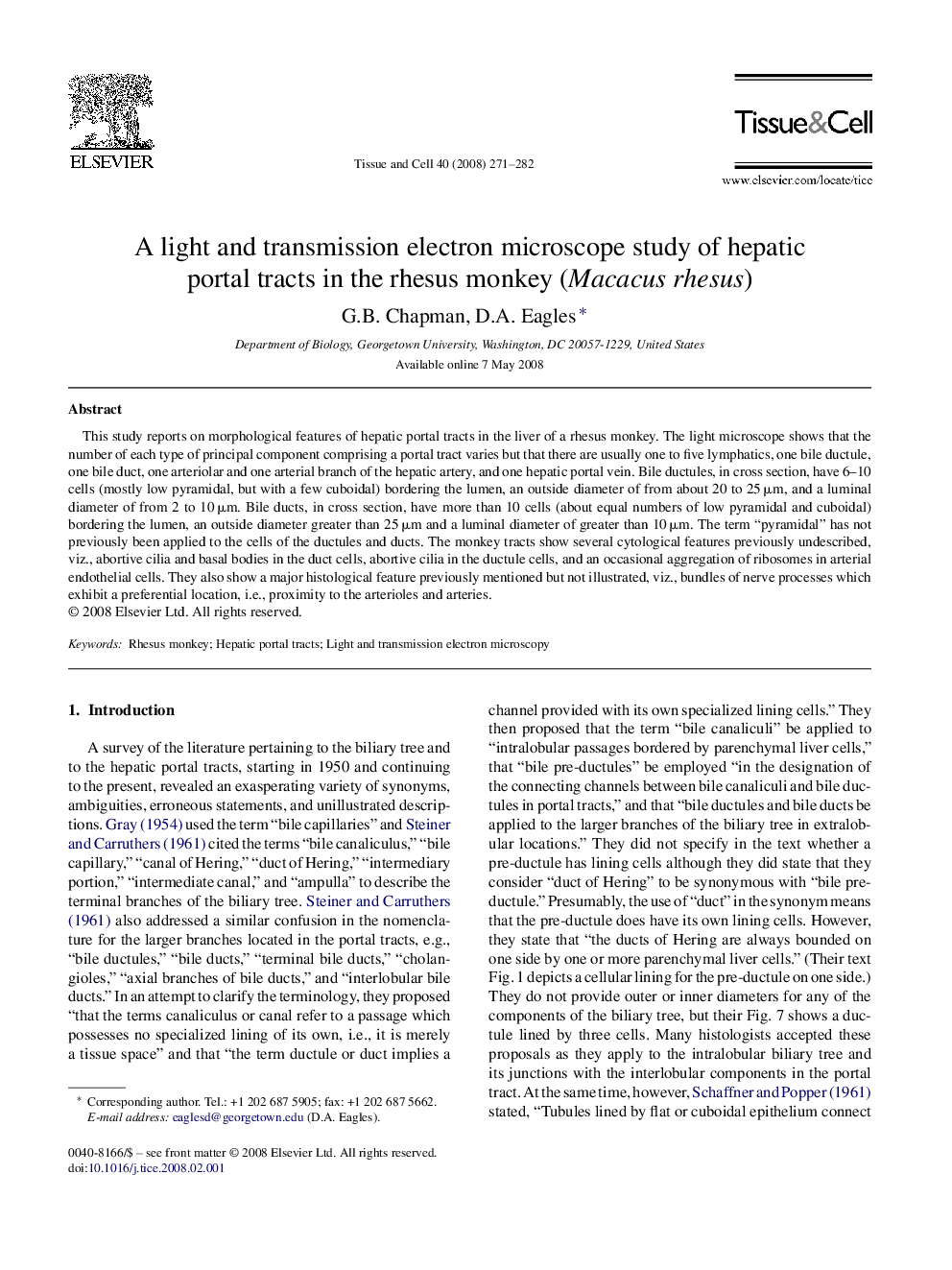| کد مقاله | کد نشریه | سال انتشار | مقاله انگلیسی | نسخه تمام متن |
|---|---|---|---|---|
| 2204091 | 1100551 | 2008 | 12 صفحه PDF | دانلود رایگان |

This study reports on morphological features of hepatic portal tracts in the liver of a rhesus monkey. The light microscope shows that the number of each type of principal component comprising a portal tract varies but that there are usually one to five lymphatics, one bile ductule, one bile duct, one arteriolar and one arterial branch of the hepatic artery, and one hepatic portal vein. Bile ductules, in cross section, have 6–10 cells (mostly low pyramidal, but with a few cuboidal) bordering the lumen, an outside diameter of from about 20 to 25 μm, and a luminal diameter of from 2 to 10 μm. Bile ducts, in cross section, have more than 10 cells (about equal numbers of low pyramidal and cuboidal) bordering the lumen, an outside diameter greater than 25 μm and a luminal diameter of greater than 10 μm. The term “pyramidal” has not previously been applied to the cells of the ductules and ducts. The monkey tracts show several cytological features previously undescribed, viz., abortive cilia and basal bodies in the duct cells, abortive cilia in the ductule cells, and an occasional aggregation of ribosomes in arterial endothelial cells. They also show a major histological feature previously mentioned but not illustrated, viz., bundles of nerve processes which exhibit a preferential location, i.e., proximity to the arterioles and arteries.
Journal: Tissue and Cell - Volume 40, Issue 4, August 2008, Pages 271–282